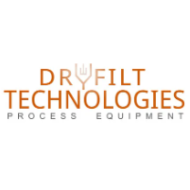FLUID BED DRYER
A Fluid Bed Dryer with latest improvement in design make this unit a truly versatile one for pharmaceutical, food, dyestuff, chemical and polymer industries. All contact parts are made out of S.S.304/316 and are provided with isolated control panel. The principal of FBD is drying with hot air while the powder is being fluidized. The Fluid Bed Dryer has a bed of solid particles which are fluidized by passing a stream of air upward through a specially designed perforated sheet. The upward velocity of air is so maintained so as to slightly lift the solid particles and set them in motion.

FBD is used mainly in industries like-
Silent features -
- Chemical.
- Pharmaceutical.
- Food.
- Dairy.
- Metallurgical.
- Dyes.
- Other process industries.
- High rates of moisture removal due to excellent gas-particle constant which results in high heat and mass transfer rates.
- High thermal efficiency is usually achieved if part of the thermal energy for drying is supplied by the internal heat exchanger
- Lower capital and maintenance cost Reduced contact time for drying
- Ease of control
Application of Fluid Bed Dryer -
Before knowing the importance let us first understand, what is Fluid Bed Dryers? Most of the consumer has never heard of them but in the world of bulk processing, they have established themselves as dependable and multi-processor proficient of completing the crucial task. They are basically as the name suggests they are used for drying material such as granules, fertilizer, tablets, mixing of powder, agglomeration, drying of powders, etc. They are popular in the production industries like chemical, food, pharmaceutical, dairy, dyes, etc.
Fluid Bed Equipment works on the principle of fluidization hence named a Fluidized bed dryer. They are often preferred over rotary dryers for drying and cooling of a wide range of material.
Fluid Bed dryers are arguably used in many industries but it has its greatest importance in the pharmaceutics industry. It has replaced the traditional drying techniques which were time-consuming and have helped to enhance the system. This has led the industry to enter in uniform drying era. It is used to reduce the moisture content of products and granules.
Some applications of fluidized bed dryer equipment in other industries include the Food industry for processing of food, preservation, and dehydration. Fertilizer industries use it for inorganic fertilizer drying such as calcium-based fertilizers. There are mainly two types of fluidized bed dryer. The first is a continuous fluidized dryer in which the material flows into the machine, gets dried, and is discharged without affecting any other process. The second process is batch drying which involves feeding a fixed amount of product at a time into the dryer, the machine carries out the drying and when the machine finishes the process the materials are discharged. Although the continuous dryer has higher output rates most of the pharmaceuticals rely on the batch fluidized bed drying pieces of equipment.
Fluidized Bed Dryer Parts
The machine involves three principal parts: Air Handling Unit (AHU), main stainless steel tower, and Exhaust system. The rectangular size container’s one end feds fresh air and the other links it to the dryer and in this process, the air is passed through some filters to remove impurities. The primary filter removes airborne particles. The secondary or post-filter deals with fine dust particles. Finally, through dehumidifiers and is heated on its way to the dryer.
Stainless Steel main tower
The base part of the main tower receives the air from Air Handling Unit (AHU) via stainless steel tube. The product container holds the saturated material usually granules and is transferred to the movable trolley. The product container consists of a mesh screen with perforated holes to resist airflow from the bottom chamber and hold the product. It also consists of an expansion chamber forming the middle part of tower and filter bags which blocks fines from being exhausted.
Exhaust piping
The machine consists of pipes emerging from the dryer and ultimately forms a vent connected to the blower. It also onboards actuators that closes and opens the vent, controlled by the control system.
Conclusion:
Fluidization provides the best solution for drying many products.
